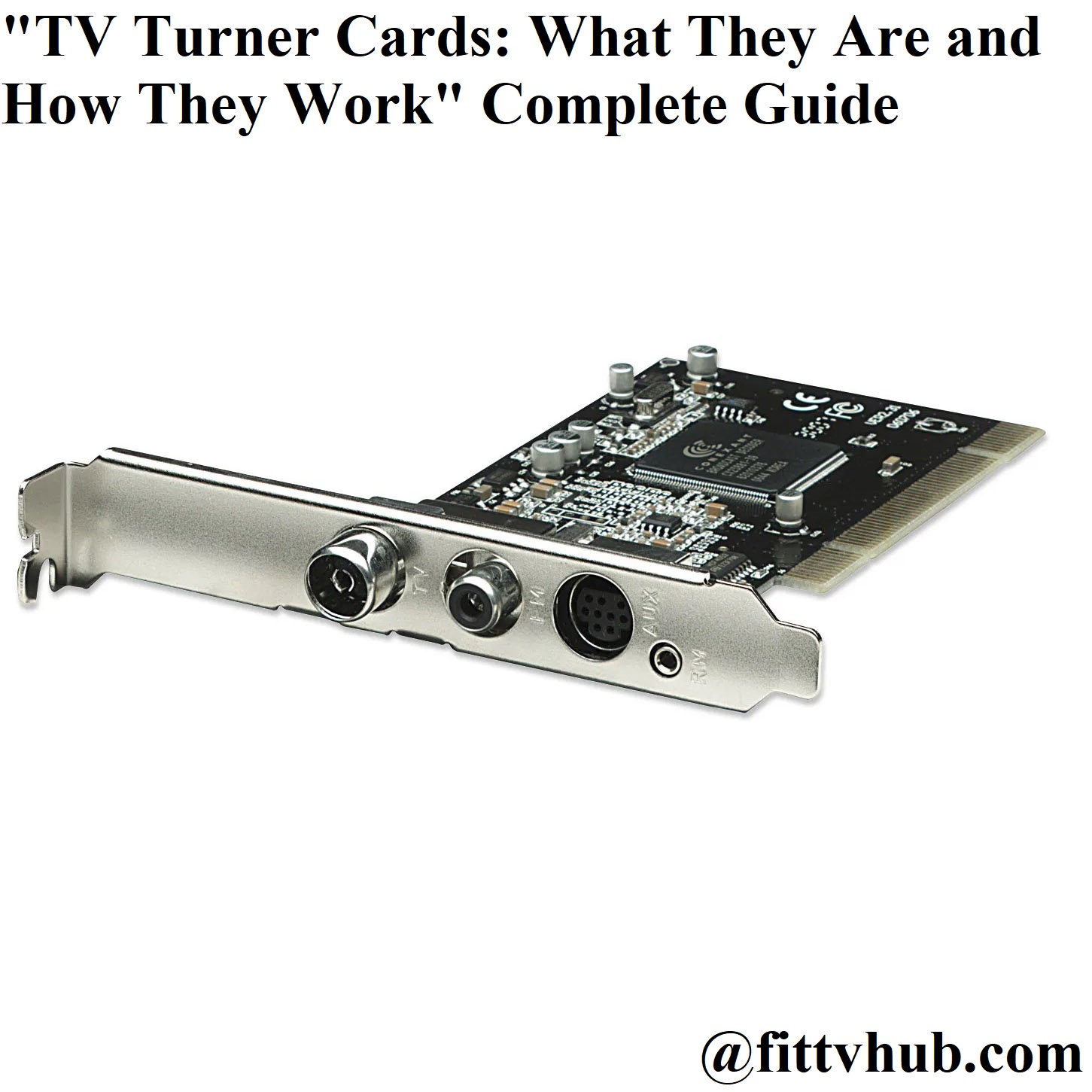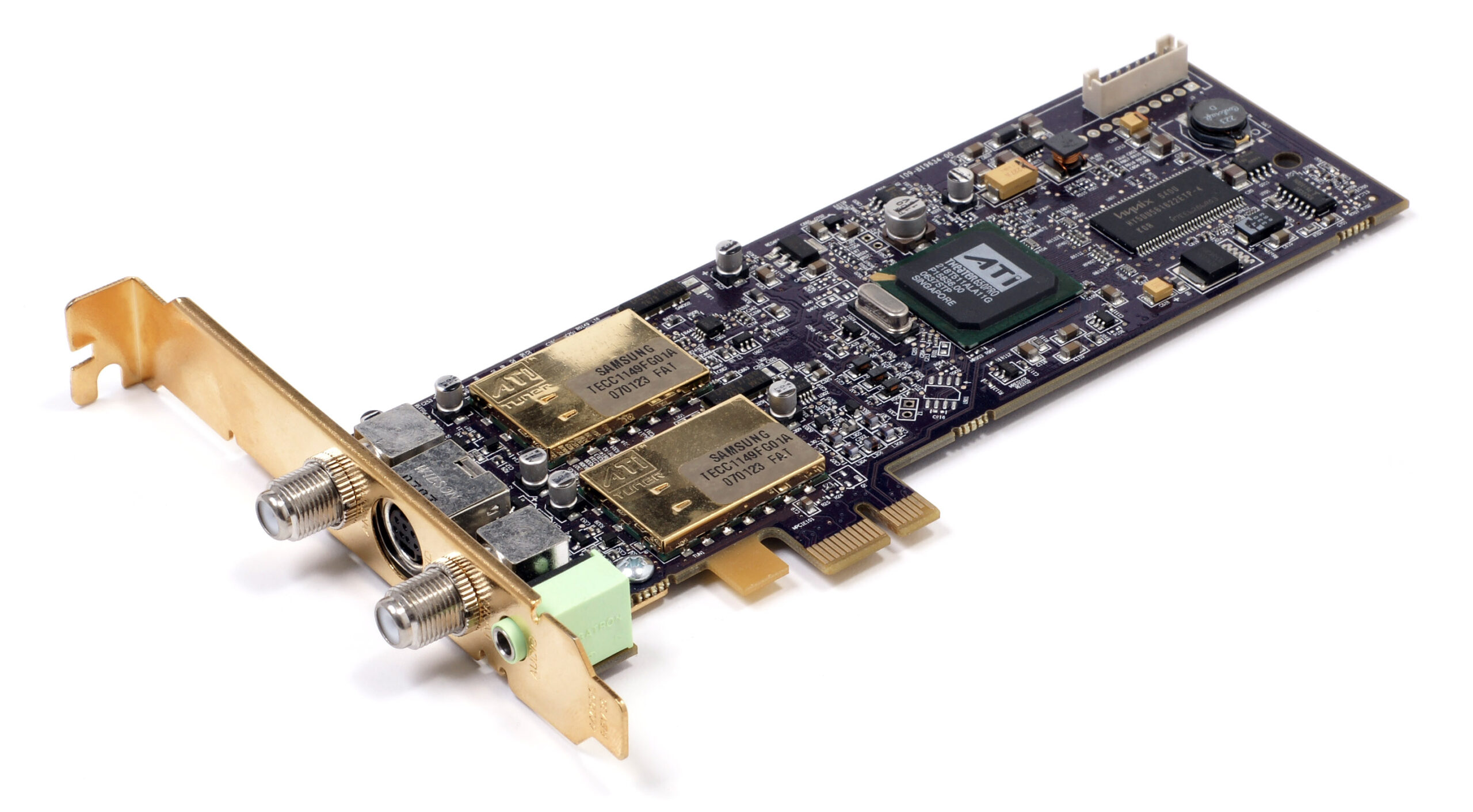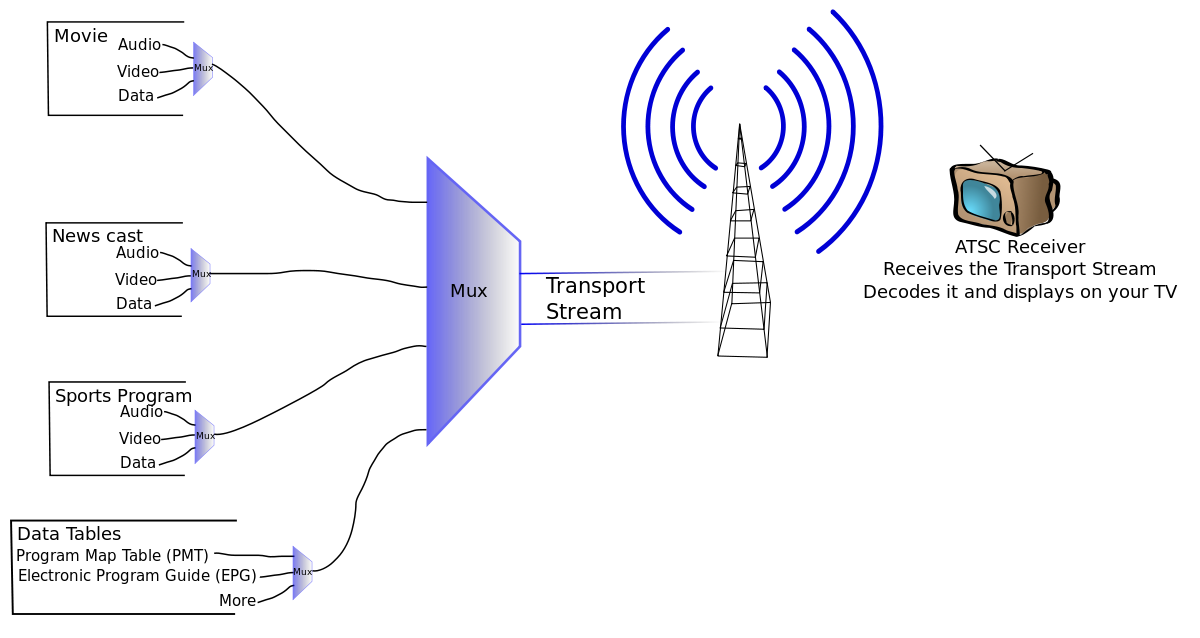Do you struggle with understanding the new technology of TV turner cards? You’ve come to the right place!
In this article, we will explore what these cards are and how they work so that you can understand them better.
Get ready to learn about TV turner cards and their benefits!
TV turner cards are devices that allow users to watch television on their computers. They use either a PCI or PCMCIA (PCMCIA being the type used on laptop computers) slot in a computer and connect to a TV or terrestrial antenna. They enable the user to access digital programming either through their TV service provider’s subscription service or through free-to-air broadcasts.
In this guide, we will discuss what TV turner cards are, how they work, what types of TV signals can be received and how to get the most out of them by optimizing your setup. We’ll also provide advice on troubleshooting and installation as well as highlight some factors to consider when selecting your card and related components.
Importance of TVs for Campers
Televisions have become an important part of camping for many campers, providing much needed entertainment after a day full of outdoor activities. However, reception in remote locations may be limited or nonexistent and expensive satellite dishes may be out of reach for some. This is where turner cards can come in handy.
Turner cards are small devices that attach to the external antenna port on a television and allow the user to see non-digital transmission over the airwaves and even access pay TV networks depending on the model. Below we will discuss how they work and how you can use them.
Benefits of Portable and Durable Options
TV tuner cards are an important component of the TV set up, providing the hardware interface to connect the broadcasting signals to your TV. They come in either portable or durable options and may be USB, PCI, or PCI-E based. As these cards offer several key benefits for users looking for a great home entertainment experience, this guide will help you decide which type of TV tuner card is best for you.
Portable and durable options both come with their own advantages. Portable models are ideal for those who require mobility over cost-effectiveness as they are more affordable than their more permanent counterparts. Furthermore, they can be moved from one computer to another without having to wire up an intricate configuration each time, allowing you to take your home entertainment system on the go.
Durability should be considered when setting up a home entertainment system. While many of today’s equipment is built with portability in mind, it’s a good idea to invest in a durable option that won’t fray over time as you transport it from place to place. The advantage here is that this kind of device usually provides better performance over longer periods of time and will stand up against wear and tear better than its portable counterpart would.
Purpose of Guide
This guide has been designed to provide an overview of what TV turner cards are, how they work and the various options available. It is aimed at those who wish to install an additional television to their existing setup or upgrade an existing device, but may not be familiar with the terminology used or the product options.
It will explain recent developments in turner card technology and where suitable recommendations for purchasing a card can be made. Ultimately, this guide will empower readers with the knowledge required to make a informed decision when selecting a turner card for their viewing preferences.
Factors to Consider When Choosing a TV for Camping
Whether it is for taking to the camping ground, for use on a boat, or for vacation homes, there are certain factors to consider when choosing a TV for outdoor applications. Firstly, you must consider the size of the TV – smaller television displays are ideal as they can be fitted easily wherever necessary – however, bear in mind that smaller TVs will display images of lower quality. Similarly, weight is also an important factor to take into consideration as larger models tend to be very heavy and difficult to move around.
The type of display also needs to be carefully considered when choosing a camping TV – LCD or LED screens are widely recommended as they provide clear and bright images regardless of conditions outside. Moreover, you should check whether your chosen model is compatible with digital and satellite signals – modern TVs offer these features so they can easily access channels via the internet even while in remote locations; however if you plan on viewing solely with an aerial then make sure that the model has an HD compatible aerial receiver built in.
The design of your chosen television also needs careful consideration – outdoors TVs are designed with additional water-resistant protection which helps protect them from environmental elements like water, dust and dirt; alternatively model designed for boats will have additional rust protection measures meaning they can remain safe even in saltwater conditions. In addition, anti-glare screens should also be checked as these models help reduce reflections off windows and bright lights which interfere with viewing experience.
Size and Weight
TV turner cards come in various sizes and weights, depending on the manufacturer. Some models are designed to fit into PCIe slots, while others are designed to fit into ExpressCard slots. The size and weight of the turner card will depend on the type of slot it is designed for, as well as its purpose.
Turner cards that are made for ExpressCard slots can be particularly lightweight, with some devices weighing only a few ounces. PCIe cards can be personal computer sized as well as laptop-sized and will generally weigh several pounds.
It is important to ensure that the turner card is compatible with your device by researching the specifications before purchase. This will ensure that it fits properly and does not exceed the allotted size for your slot type. Additionally, some manufacturers may offer various services or features depending on which port you choose to use; understanding these services thoroughly beforehand can be beneficial when selecting the best card for you.
Power Source
TV turner cards, also known as decoders, are devices that allow computers to accept and decode television signals. These devices are typically pertinent to users of a PC who wish to replicate the functions of a television set on their computer. In order for a TV tuner card to work, it requires an external power source.
The power source is usually derived either from the supplied adapter or from the IT bus slot on the device’s motherboard. In most cases, AC adapters supply power that is converted during use, depending on whether USB port or aging PCI slots are used. For example, AC adapters can provide up to 12 volts of DC current through USB ports and up to 5 volts through PCI ports, which will be sufficient for most uses.
It is important that you select an adequate power source for your particular computing device in order to avoid damage caused by overloading due to insufficient voltage and amperage ratings for specific operating needs. As with any other purchase decision it pays to prioritize safety first when selecting your TV tuner card’s power source in order get reliable and optimal performance results out of your device.
Screen Quality
When using a TV turner card, screen quality is important to consider. Most cards come with support for up to 1080p, which is usually the highest resolution available on standard televisions and monitors. Some cards may offer higher resolutions such as 4K and 8K, which require compatible displays in order to take advantage of the technological advance.
Additionally, many TV turner cards come with options for customizing colors and contrast levels to further improve video quality. In addition, some cards offer additional support for Dolby Digital audio or DTS Surround sound systems. This helps provide an immersive experience when playing or watching certain types of media content.

Tips for Setting Up and Using a Portable TV While Camping
When camping or travelling, you might want to enjoy your favorite shows after a long day outdoors. To do this, you’ll need a portable TV and a TV tuner card. In this section we will explain how they work and what you need to set up your own portable antenna television system.
A TV tuner card is a device that connects to the USB port of your laptop or computer to enable it to receive free tv signals from over the air broadcasts and local cable networks. With the help of an external antenna, which needs to be connected to the device, it can capture digital (DVB-T2) terrestrial television signals transmitted over UHF and VHF frequency bands. It then decodes the signal and sends it through an HDMI or composite cable for playback on any type of monitor with appropriate inputs.
Setting up a portable TV while camping requires some prior preparation in terms of planning where you’re going, whether there is sufficient signal strength in that area and other considerations like electricity supply availability, where the antenna will be placed and so on. The table below outlines these factors that you must take into account when deciding whether it is feasible to take your portable TV with you or not:
-Location: Make sure there are towers broadcasting in close range; possible locations being near lakes and other open bodies of water.
-Frequency bands: Different locations require different frequencies; check your local news stations for frequencies based on location as well as checking sites like AntennaWeb before deciding which one suits best for viewing purposes
-Antenna style: If available try using more directional antennas such as Yagi type for higher gain levels; otherwise try mounting the antenna at an elevated height for better reception
-Mounting height and positioning: Try locating higher ground spots such as mountains or hills where obstructions are not nearby for better reception
-Power source availability: Check at all times if there is proper power source availability onsite since batteries have limited life
Choosing the Right Location
When deciding where to place your TV turner card, you should consider the space available, power availability and type of television back-end that you are using. It is also important to choose a location where it will be protected against dust and other elements. When selecting a spot for your card, ensure that it will fit comfortably in the open space on the back of your television or other media device.
Do not place the card too close to any high-powered electric devices such as heaters, electric blankets or microwaves. Make sure there is enough ventilation around the cardboard so that air can circulate freely, allowing it to stay cool during normal operation.
When connecting any type of media device to your TV turner card be aware not to overload it with more connections than recommended for its size. Also be sure that no part of the cord comes into contact with sharp edges before plugging anything else into it.
Setting Up the TV
TV Tuner Cards are physical components used to capture and decode audio and video content so that it can be displayed on a computer or used as part of an entertainment system. To use a tuner card, you need to install it into your computer or laptop and connect it to the same TV setup. Many computers come with tuner cards pre-installed, but for those that don’t, there are a few steps you will need to take in order to get them up and running.
Tuner cards are available in both internal (PCI) and external (USB) varieties, depending on what kind of setup you have in your home. Both have their own unique advantages; however, the primary difference between the two is that PCI cards feature greater bandwidth while USB ones offer portability. Their installation process may also differ slightly based on type; however, most can be connected to a host of devices via coaxial cables directly from your TV tuner box or via component video cables which require an additional device conversion cable if necessary.
If you do not already have one installed in your computer, then purchasing an internal PCI card is the most cost-effective solution for connecting your TV setup to your computer. To do this properly, you will need a spare PCI slot – found near the rear of most modern desktop PCs – as well as drivers for the card itself (which can usually be downloaded from the manufacturer’s website). Once installed correctly with any necessary software updates made, simply plug in all cables associated with it properly according to instructions provided by its user manual before powering up both your PC and television set.
Troubleshooting Common Issues
Though TV tuner cards are designed to be straightforward, there may occasionally be situations in which the card is not working correctly. This section will provide troubleshooting information to help you diagnose and ultimately solve the issue.
First, check that your computer can support your newly installed TV tuner card — make sure you have an available PCIe slot and that your system meets any other requirements listed in the product specifications. Ensure that all of your software is up to date, which includes the operating system, drivers, and relevant software applications related to your TV tuner package.
If you are still having problems with connecting or using your card’s features, locate and read over the documentation accompanying your device. If nothing else works check and see if you meet all of the specific requirements needed for HDTV reception with regards to antenna or cable connection as well as other features included on/required by some cards like product decoding systems such as QAM/ClearQAM decoding or PVR capabilities through included software.
If you continue to experience difficulty even after taking these steps, reach out for technical support from either the manufacturer or retailer that sold you the tuner for further assistance and workaround instructions.
Conclusion
In conclusion, TV turner cards are an invaluable tool for those who need access to a wide range of channels. Whether you’re watching cable TV over the air or using your computer as a multimedia center, these cards provide you with the capability to watch what you want, when you want.
Keep in mind that different types of cards will be required based on your viewing preferences and local broadcast frequencies. Ensure that you get the card best suited for your needs so that you can maximize its features and never miss any of your favorite television shows.
FAQs
What are the different types of TV tuner?
There are different types of TV tuners, such as analog TV tuners, digital TV tuners, hybrid TV tuners, and network TV tuners.
How do you connect a TV card?
You can connect a TV card by inserting it into the PCI or PCI Express slot of your computer’s motherboard. Some TV cards can also be connected through USB or Ethernet ports.
What does a TV tuner card do?
A TV tuner card allows you to watch and record television signals on your computer. It captures TV signals and converts them into a format that can be displayed on your computer screen.
What is TV smart card?
A TV smart card, also known as a conditional access module (CAM), is a device that allows you to access encrypted digital TV channels. It is usually inserted into a slot on the TV or set-top box.
Can TV tuner card be connected to laptop?
Yes, a TV tuner card can be connected to a laptop through a USB port or an ExpressCard slot.
How do you use a smart card on a TV?
To use a smart card on a TV, you need to insert the card into a CAM and then insert the CAM into the TV or set-top box. The TV will then be able to decode the encrypted channels that are authorized by the smart card.
What is a TV card player?
A TV card player is a software program that is used to watch and record TV signals on your computer. It is usually included with the TV tuner card and allows you to control the TV tuner functions from your computer.
Can we buy TV with credit card?
Yes, you can buy a TV with a credit card. Most retailers accept credit cards as a form of payment.
Do you need a credit card to set up a smart TV?
No, you do not need a credit card to set up a smart TV. However, you may need a credit card to purchase apps or content from the smart TV’s app store.
Which is the best TV tuner?
There are many good TV tuners on the market, and the best one for you will depend on your specific needs and preferences. Some popular options include the Hauppauge WinTV-dualHD, the AVerMedia Volar Hybrid Q, and the SiliconDust HDHomeRun.
See Also-
- Best tv for dorm
- Best pillow for watching tv in bed
- Best tv for bedroom
- Best tv for camper
- Best tv for bright room

